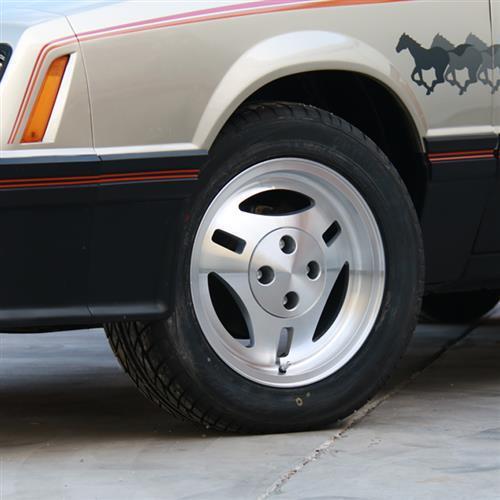
|
Barry's
Tire
Tech This is a series of articles on the technical aspects of tires, their care and usage. My primary purpose in these articles is to help people understand tires and thereby reduce the risks we all face every day. ..........and since tires is just about the only thing I know about.......... Please drop me a note if you have a topic you want to see: Barry@BarrysTireTech.com |
|
TRX and PAX Tires: This article is a bit of history and a bit of a rag on Michelin, as both TRX and PAX were Michelin inventions and unnecessarily peculiar.
|
|
Notice that these Mustangs have 3 spoke wheels - a TRX indicator. Also, when you google TRX, Mustang photos come up a lot. 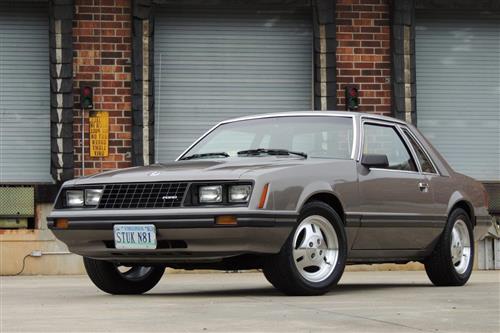
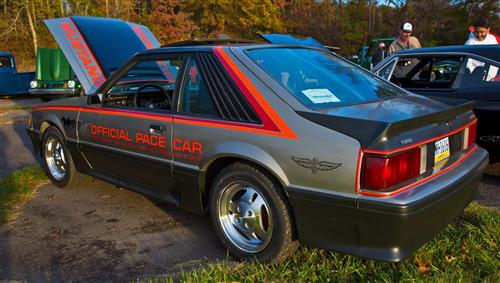
|
TRX Tires: In the late 1970's, the transition from bias ply tires to radials was more or less complete. The typical aspect ratios were 80, 78, and 75, with 70 series considered low profile. It was known that the lower the aspect ratio, the better the handling, but the worse the ride. The TRX was developed to address this issue. Michelin developed a tire/wheel combination that had an angled and lower height flange that increased the amount of the sidewall flexing, resulting in a better ride. Because of the different flange, Michelin designed the wheel to come in metric diameters. That way it would be obvious which tires were designed for that special flange. Ya' see, it was common for tires to be sized in inches for both width and rim diameter. When radials came onto the market, it was the Europeans who led the way - and they decided to use metric units - except that wheel diameters in inches were carried over - I suppose so that the transition would be easier. So the first radials were sized like this: 205R15 - a mix of metric and English units. Even lower aspect ratios were a mix, like this: 185/70R13. This has been carried over to the present day. |
|
The Technical Details: The only thing special about TRX tires/wheels was the flange. It was shorter and angled. (See the 2 images to the right, the TRX on the top.) This allowed more flexing of the sidewall and resulted in a better ride. The sizing convention at the time (and still today!) was width/aspect ratio, bias ply/radial, rim diameter. Like this 205/70R15. Because TRX tires had a different flange configuration, these were specified as all metric. For example, wheel diameters were standardized at 340mm (13.39"), 365mm (14.37"), 390mm (15.35"), and 415mm((16.34"). |
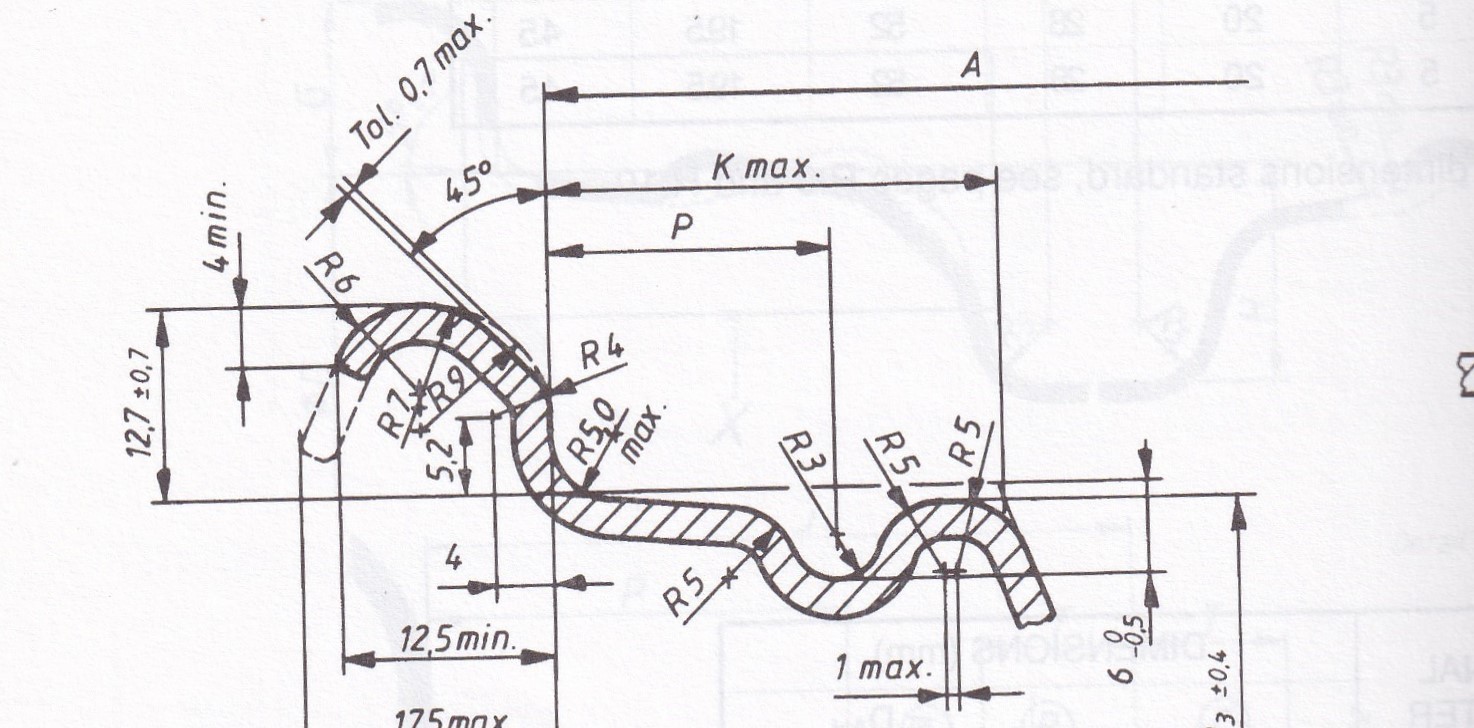
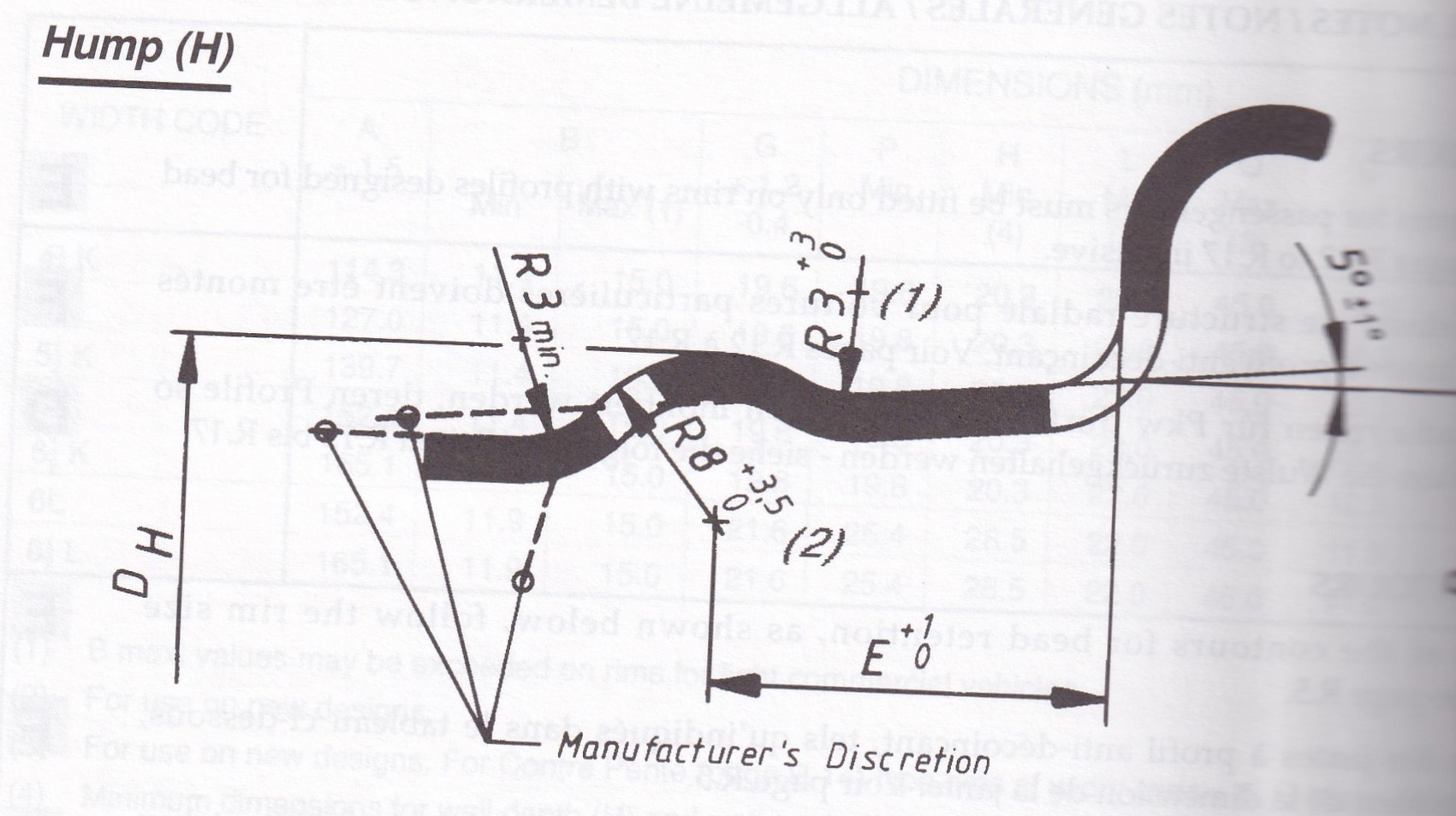
|
|
I think it is obvious that when the car manufacturers sourced these TRX tire/wheels, that the first sources for tires was Michelin. It took a while because of the development costs, but other tire manufacturers did eventually produce appropriately sized tires. But it didn't last very long. Today, the only source of these tires is Michelin - in their vintage series. But as these things go, shock absorber manufacturers figured out ways to soften the ride without making the handling too sloppy, so the TRX innovation became redundant. By 1985, the thing had run its course. It lasted 6 or 7 years, depending on how you want to measure it. Looking back, it should have been obvious that the answer to the ride problem was reducing the size of the forces being transmitted to the chassis, not reducing the forces being generated as there is a limit to how small the forces could be generated, but no limit as to how much of those forces could be prevented from being transmitted to the chassis. |
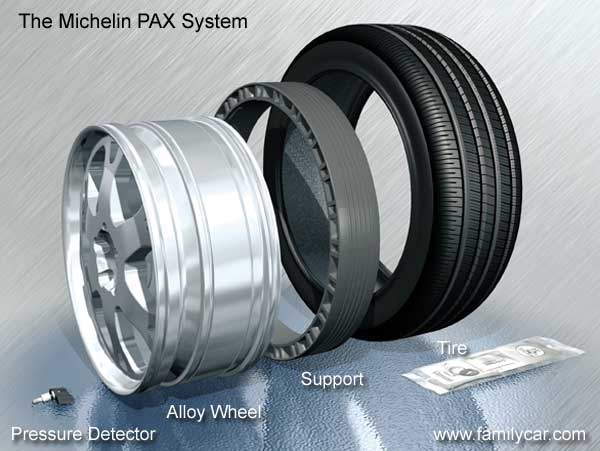
|
PAX Tires: For as long as I can remember, car manufacturers wanted to eliminate the spare tire. Not only would that save weight, but the jack and related handling equipment would no longer be needed. A number of solutions were tried, mostly just reducing the weight and size of the spare itself. Every one of these has shortcomings. Among those ideas was the use of a wheel within the tire, slightly smaller in diameter than the inflated tire, which would come into play if the tire lost air pressure. Lots of technical issues with that idea. But, WAIT!! Michelin had a better idea. (See the photo to the left) Their idea was to create a special wheel that made it easier to mount that special inner wheel. |
|
The problem was that not only did the tire still need to be mounted on that special wheel, so part of that wheel needed to be a smaller diameter, but to prevent the regular tire from coming off the wheel, the flange was completely different. In regular wheels, there is what we call that the drop center. But since the inner wheel was where the drop center normally was, the drop center on a PAX wheel was very close to the bead seat. Overall, that required special equipment to handle mounting the inner wheel and the tire - and that required special training. |
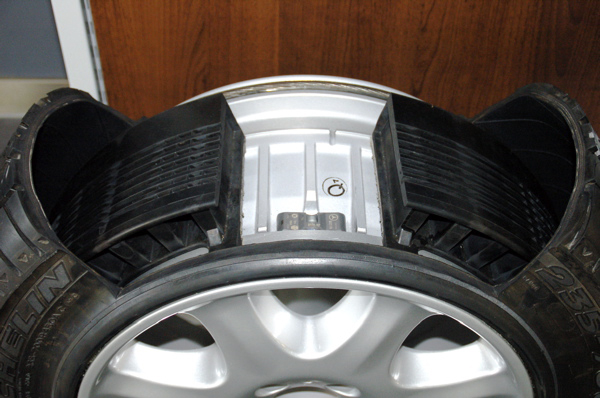
|
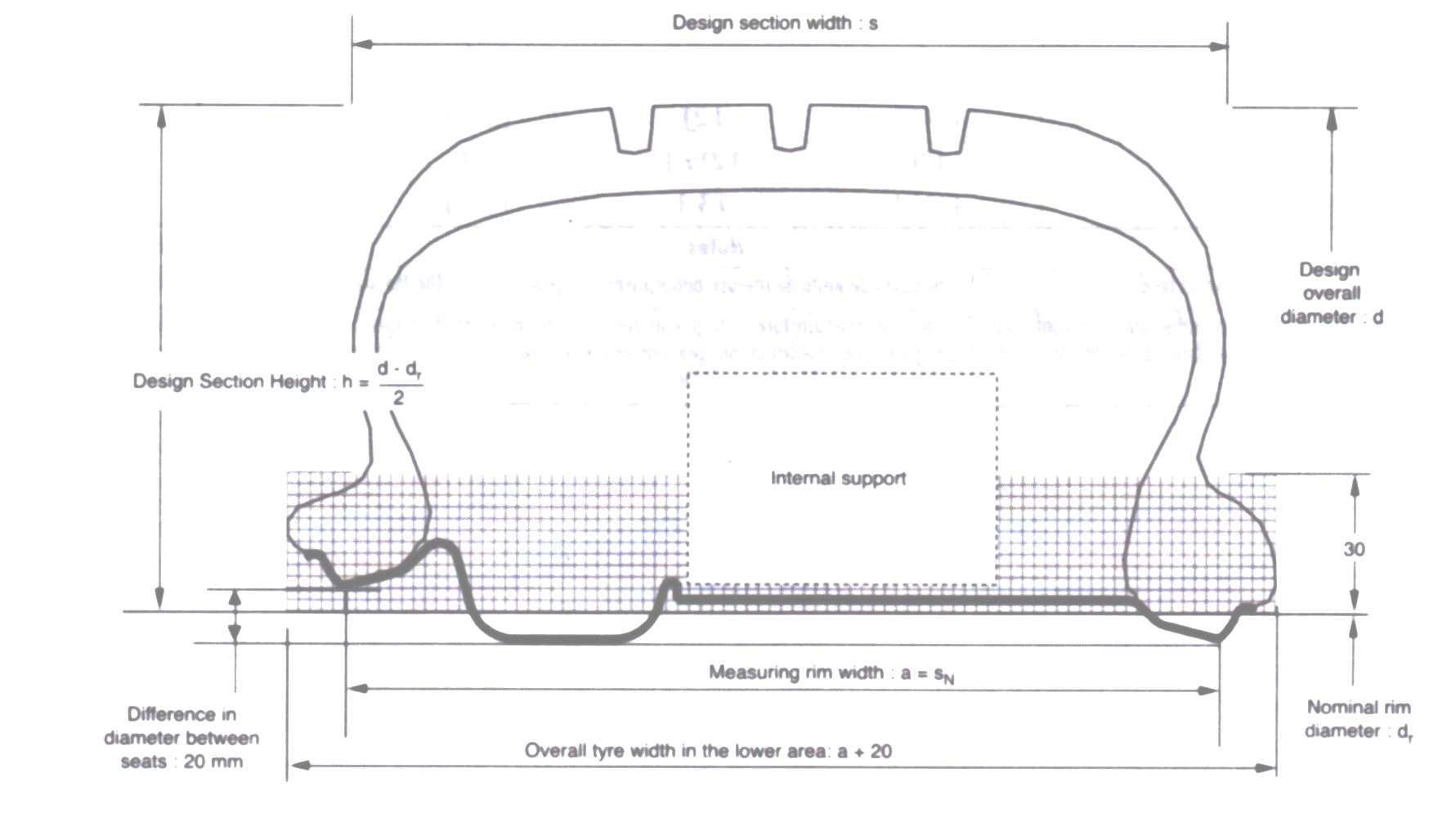
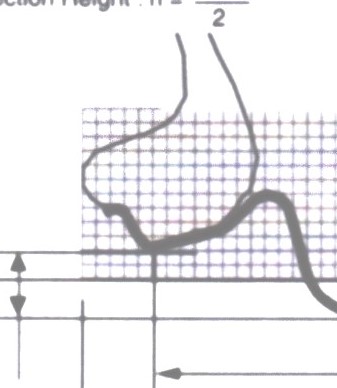
|
Further, even the tire was different. There were 2 different bead seat diameters. So
to prevent a mixup, the tire sizing was specially labeled like this:
245-680R460A Where:
That means the tire could only go on the wheel a certain way. PLUS notice the lower image. That's the bead area. It's got this huge bulge, very different than anything I've never seen. I suspect that is a flange protector. But it appears to be vital to the wheel/tire fit. |
|
While the concept was first displayed in 1997, it wasn't until the mid 2000's that several car manufacturers were persuaded to source this system on their cars (in spite of all those peculiarities). Among them were the Honda Odyssey and the Nissan Quest - both minivans. Interestingly, they only sourced the system on special versions, while they used conventional wheels/tires on the rest of the car line. Normal tire dealers couldn't service them unless they had the equipment and the training - which they weren't going to do for such a small possibility of needing it. The net effect was that owners of these vehicles had to return to the car dealer to get the tires serviced. That included flat repairs. After 4 years, both Honda and Nissan discontinued PAX tires. |
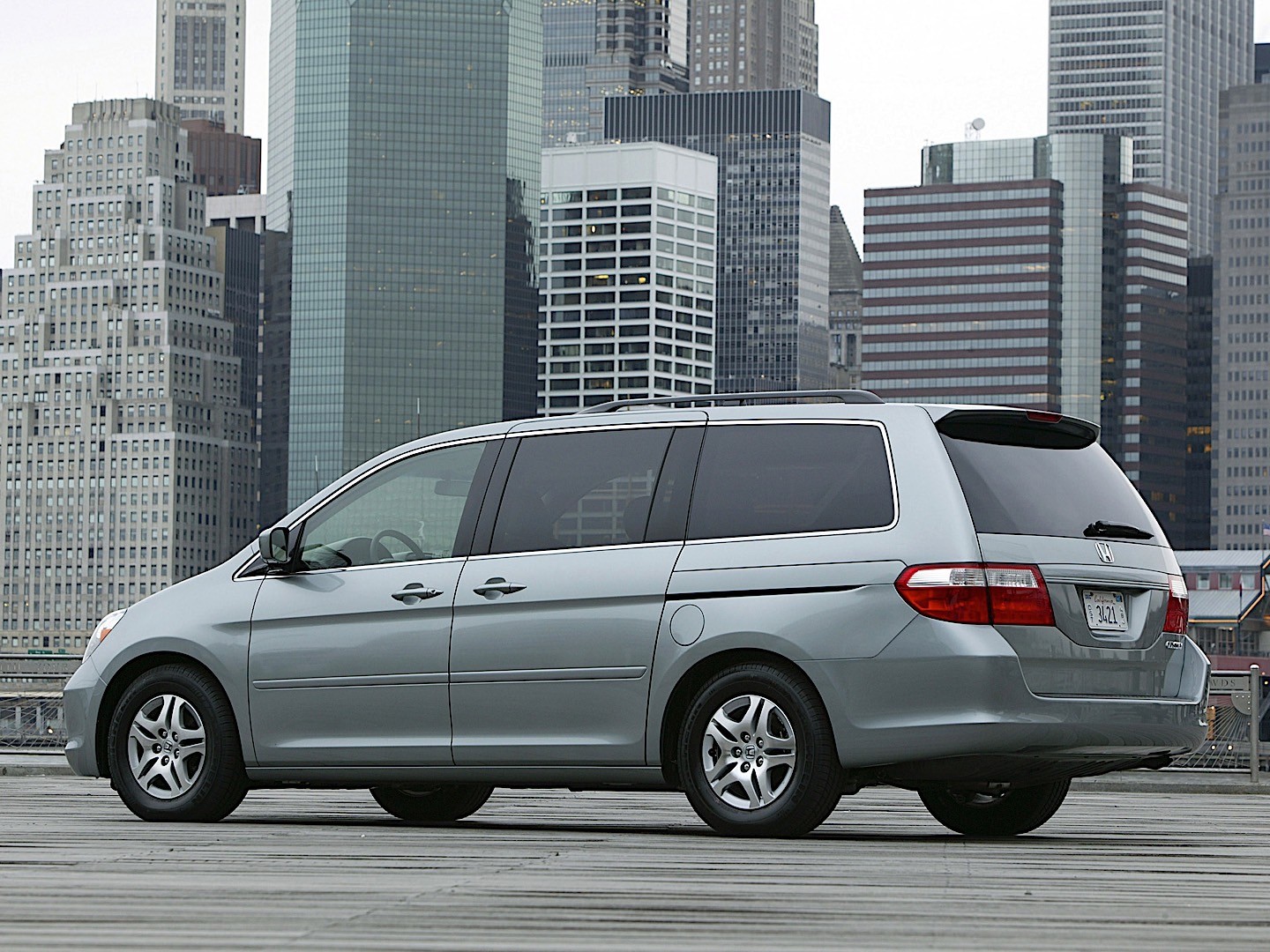
|
|
Editorial Comment: Both of these systems created unique tires and wheels. On top of that, PAX was completely incompatible with conventional tire/wheel mounting systems. |
|
|